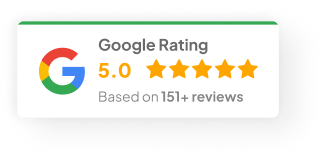25 Mar 25
What Are The Common Sales Mistakes That Hurt Conversions?
If your sales are flat or conversions are lower than you’d like, don’t freak out just yet. It might not be your product or service that’s the problem. More often than not, it’s how you’re pitching it — the small stuff sales teams tend to overlook.
I’ve seen it plenty over the years. Great products lose out because salespeople get caught in avoidable traps. So let’s run through some of the most common mistakes that kill conversions — and what you can actually do about them.
1) Not Really Getting What the Customer Needs
Look, the worst thing you can do is assume you know what your customer wants without asking. I remember a client from 2019 who had a killer software product, but their team just rattled off features without digging into why prospects even needed it. Result? They lost deals left and right.
If you don’t dig into their pain points, you’ll just be pushing a product they don’t care about.
Try this instead:
-
Ask smart, open questions.
-
Really listen to what they say (and don’t say).
-
Show them exactly how your product solves their specific problem.
2) Making Your Pitch Too Complicated
Ever sat through a sales pitch that felt like a lecture? Too much jargon, too many features, all mashed into one overwhelming mess?
Yeah, no one wants that. Prospects get confused or bored, and bounce.
Keep it simple:
-
Focus on the key benefits.
-
Use plain language.
-
Break things down into bite-sized points.
This stuff works every time.
3) Sweeping Objections Under the Rug
Objections aren’t the enemy. They’re normal. But ignoring them? That’s where deals go south.
I had a salesperson once who’d always dodge price questions until the very end. Guess what happened? Leads got suspicious, and most disappeared.
Be proactive:
-
Bring up common concerns early.
-
Talk through pricing, features, or competitor questions before they do.
-
Build trust by being open and confident.
4) Pushing Prospects Too Fast
Patience is rare, but it pays off.
Rushing a prospect feels pushy and turns people off. They need time to think, chat with their team, or just get comfortable.
Instead:
-
Give them space.
-
Provide clear info.
-
Be available for questions, but don’t nag.
I’ve seen deals saved just by slowing down and letting people breathe.
5) Forgetting to Follow Up
It’s easy to think your job’s done once you make contact. But follow-up is where many sales die.
People get busy, distracted, or just forget. If you don’t check in, someone else will.
Here’s a simple follow-up plan:
-
Send a quick, personalised email.
-
Offer extra resources or answers.
-
Keep the convo alive, but don’t be annoying.
6) Overlooking Social Proof
People trust other people. Simple.
If you don’t show testimonials, reviews, or case studies, prospects might doubt you — especially new customers.
Make social proof part of your pitch:
-
Highlight happy customers.
-
Share real stories and results.
-
Use stats where you can, like “98% customer satisfaction.”
7) Selling Features, Not Benefits
Too often, sales focus on what a product does, not why it matters.
Features matter, but customers care about how it helps them.
So, instead of saying:
“Our software has a real-time dashboard and AI analytics.”
Try this:
“You’ll save hours each week by instantly seeing what matters most to your business.”
8) Neglecting the User Experience
If your website’s clunky, slow, or confusing, you’re losing sales.
I’ve seen it again and again — great products buried behind bad UX.
Fix it by:
-
Speeding up your site.
-
Making navigation easy.
-
Simplifying checkout or sign-up.
A smooth experience keeps people coming back.
How a Good Web Design Agency Can Help
Here’s the kicker: even the best sales pitch can fall flat if your website doesn’t back it up.
A cookie-cutter site or outdated design makes you look like you don’t care. But a custom, well-thought-out site builds trust and confidence right away.
That’s where a team like Chromatix comes in.
We get how to blend design with sales psychology — clear menus, fast pages, persuasive calls to action. All aimed at turning visitors into paying customers.
If you’re ready to stop leaving money on the table, why not have a chat? Let’s build a website that actually works for you.


